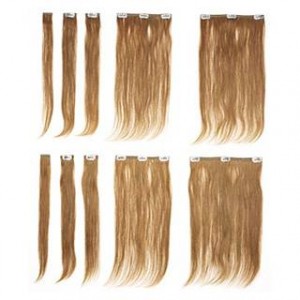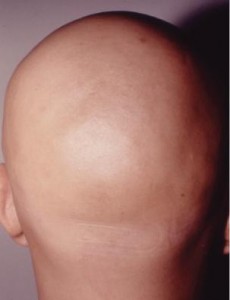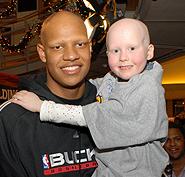Archive for the ‘women hair loss’ Category
Friday, December 25th, 2009

Q:
For thicker eyebrows, Talika hasn’t really worked for me. What’s a better treatment?
A:
There are lots of products which can be found in the cosmetic section, like Talika, which purport to thicken hair. These products, as far as long term solutions, are not really effective in thickening hair shafts or increasing their density. Talika is a type of gel made up of fibers. After applying the gel one time, the eyebrows appear fuller, for a 24-hour period. For some people, this one day-lasting treatment is good enough.
At the present time, there are no agents which can aid in the growth of eyebrows on a long-term basis. A hair transplant for the eyebrows is the only treatment which will have permanent results. After an eyebrow transplant, the patient will have natural hair growing in their eyebrow area. Hair follicles are incised from the scalp so they’ll grow like head hair and will need to be trimmed once every couple of days. A natural eyebrow look will result after the surgery. People who don’t have much head hair may have to undergo several transplants to achieve their desired look.
Tags: eyebrow enhancement, eyebrow enhancer, eyebrow help, eyebrow restoration, eyebrow transplant, talika
Posted in hair loss products, women hair loss | No Comments »
Saturday, November 14th, 2009

In the latest issue of the Journal of Internal Medicine, a new research study was published: “A Rare Complication: New Hair Growth Around Healing Wounds.” This study is related to Dr. Mohebi’s personal research at Johns Hopkins Medical Institute on gene therapy techniques and wound healing and how it affected the growth of mice hair.
The journal study was about a person who had hair growth surrounding a healing wound at Guangxi Medical University in Nanning, China.
The doctors involved in the study mention an incident in which hair growth occurred around a wound during the process of wound healing. Hair growth after wound healing is an atypical occurrence. This is the first time such an event had ever been recorded in scientific literature.
The doctors concluded that the wounds damaged the hair follicles and epidermis, but that it was possible for both to repair themselves if there was a suitable physical and chemical micro-environment. The doctors say that this new hypothesis may very well lead to new methods of managing hair loss, tissue engineering, and the regeneration of other organs.
At the laboratory of Johns Hopkins Medical Institute, and as part of my overall research, I did a major investigative study on hair growth as a byproduct of wound healing. On a few rats, after witnessing wound healing, to my delight, I found that some gene therapy techniques stimulated the hair growth.
My attention was on hair growth only and, coincidentally, our results matched other hair growth-wound healing studies, during 2005 to 2006. At the University of Pennsylvania, Dr. Cotsarelis, along with his contemporaries, first made public a study on the relationship between wound healing and hair growth through activation of the molecular pathway WNT.
Other similar studies have called attention to the fact that hair restoration through tissue engineering, hair multiplication, and gene therapy might one day happen and that we just may have a breakthrough a lot sooner than we expected all these years.
Parsa Mohebi, M.D.
Medical Director
US Hair Transplant
Tags: gene therapy, hair growth, hair loss, hair restoration, wound healing
Posted in California hair transplant, hair transplant, men hair restoration, women hair loss | No Comments »
Thursday, November 12th, 2009
 There was an article I came across about artificial hair transplantation. The practice of artificial hair or synthetic hair transplantation to treat hair loss or androgenetic alopecia has yet to be approved by the FDA. But, in other countries, artificial hair restoration is being attempted. In addition, in the Journal of Cosmetic Dermatology, there was a study published about artificial hair transplants, but the results are to be taken with a grain of salt as there weren’t a lot of participants. Nevertheless, it’s worth mentioning. There was an article I came across about artificial hair transplantation. The practice of artificial hair or synthetic hair transplantation to treat hair loss or androgenetic alopecia has yet to be approved by the FDA. But, in other countries, artificial hair restoration is being attempted. In addition, in the Journal of Cosmetic Dermatology, there was a study published about artificial hair transplants, but the results are to be taken with a grain of salt as there weren’t a lot of participants. Nevertheless, it’s worth mentioning.
Mentioned in the article were issues in the artificial hair implant process, which included: ineffective techniques, poor quality of hair fiber, and inexperienced surgeons. But, it’s important to note, the study’s aim is to convey the idea that artificial copolyamide fiber implantation seems to be relatively safe and a possible remedy to male pattern baldness or androgenetic alopecia.
The study consisted of 10 androgenetic alopecia adult test subjects who had tried more mainstream hair restoration techniques but to no avail; these test subjects agreed to have copolyamide fiber implanted on their scalps and were followed a minimum of three years. Initial implants included 100 fibers followed by subsequent sessions of up to 500 fibers per four to six weeks for the purpose of achieving a density of 20-40 fibers per cm2.
Throughout the study, during fiber implants and follow-up sessions, the researchers maintained an almost exact adherence to schedule. For the study as a whole, 10,000 fibers were implanted; for each test subject, an average of 1000 fibers. Overall (except for one person), researchers found that the implants resulted in pleasant-looking hair, didn’t have any notable side effects, and the subjects emotionally satisfied. At the entry point of most fibers, sebum deposition and temporary pitting were consistent throughout. In 30 percent of test subjects, there was a case of recurrent mild folliculitis.
In this study, common complications such as facial swelling, cellulitis, and severe scarring were not detected. It is important to note, each year, 15 percent to 30 percent of transplanted fibers fell away, which led to required regular maintenance. To conclude the study, factors of significant importance were the method of fiber transplant technique and consistent follow-up, leading to positive results. In the near future, hair transplants might be done with artificial hair for patients who don’t have quality donor hair and also are suffering from excessive baldness. But, much more testing is required to see whether artificial hair transplant can be an option for future hair loss patients.
Tags: androgenetic alopecia, artificial hair, Artificial hair implantation, cellulitis, copolyamide, FDA approval, fiber implantation, folliculitis, male pattern baldness, synthetic hair
Posted in hair transplant, men hair restoration, women hair loss | No Comments »
Tuesday, November 10th, 2009
 Q: Q:
Dear Parsa Mohebi,
I hope you’re doing great. I hope you also remember me – it’s —-. I visited your office in January in Mission Viejo, California. I am currently in Dubai! Thank you for the letter which you sent me regarding the tests I should take. I appreciate the time you took out for me. I have taken the tests and wait for the results.
I wanted to ask you a question regarding the hair growth. Recently I was going through some websites and landed on a product called ScalpMed. I was quite alarmed at how this product worked (as it says it does). I am aware that there are numerous type of products available in the market but for some reason this really got me interested. Can you please have a look at it and advice me whether or not to take it seriously?
I appreciate for your time. Looking forward to hear from you!
A:
The hair loss treatment industry is a multi-million dollar business. As such, there are usually companies offering much cheaper, short-cut type products which claim to have the same benefits as more mainstream hair restoration methods.
“I’ve tried hair loss products, but it didn’t work. I don’t think I’ll try it again.”
Most likely, that’s not a line you’ll hear in a commercial for a hair loss product on late night television. But that’s what I think of most of these infomerical-type hair loss treatment goods.
Given the high demand, hair loss products are numerous, but not always effective.
If patients ask me about hair loss products, I like to post them on this blog, as I’m sure there are a lot of people interested in reading about it. Scalp Med is a company which makes numerous products on hair thickening and hair loss treatment. Scalp Med likes to assemble different types of kits for their prospective customers, including a Detoxifying Cleanser Kit, Scalp Med for Women, and Mega-Multi Vitamins.
Like other companies in the hair loss industry, Scalp Med’s advertisements go as far as to say that they are FDA-approved. Any Joe Schmo can find photographs, legit testimonies, and other types of “proof” from balding clients who try to promote Scalp Med’s product.
There are various types of Scalp Med product, including topical Vitadil-5A for men, Vitadil-2A for women, topical NutriSol-RM, and Cortex Enlarger hair thickening spray. The first two Vitadils are topical solutions which contain minoxidil (also Rogaine’s key component). The claim Scalp Med makes is that they have formulated a unique delivery agent which is supposed to increase the absorption of minoxidil in women and men.
For the Scalp Med products NutriSol-RM and Cortex Enlarger thickening spray, we are sort of left in the dark about what exactly is contained in them. Except for minoxidil, the other ingredients contained in these products haven’t been proven to aid in the growth of hair and the health of hair. It’s important to note, the cleansing agents contained in a lot of these types of products do nothing to help a person grow their hair. No matter how clean hair is, it doesn’t help it to grow. Don’t believe the advertising.
I strongly urge you to find out whether your hair loss is treatable. It may stem from some other health condition instead of it being hereditary. If you’re a woman, and you know you have a typical type of female patterned hair baldness, then Rogaine may help.
Sincerely,
Dr. Mohebi
Tags: hair cleanser, hair loss product, hair volumizer, minoxidil, rogaine, Scalp Med, ScalpMed
Posted in California hair transplant, hair loss medication, hair loss products, men hair restoration, women hair loss | No Comments »
Thursday, October 22nd, 2009
 Q: Q:
I am a 26-year-old woman.Not too long ago, I felt as if I owned the world. Then I got alopecia totalis, and now I’d rather hide, so I understand what it feels like to be a freak. But, remember, we have nothing to be ashamed about. This condition is more widespread than we think and people are more understanding than we give them credit for. People like us can live normal, happy lives, although maybe we may stand out in a crowd. Since I acquired alopecia totalis, lots of my people have told me they know someone with my disease. There are more people than we know who have alopecia totalis, like NBA player Charlie Villanueva. Although we don’t look exactly like other people, if we learn to overcome our own self-doubts we can be phenomenally successful people.
I’m a female. And it is my deepest desire to show the world, and especially other women suffering form alopecia totalis, that I can live with self-respect and high self-regard. I want to make it one of my goals to inspire young girls with alopecia totalis and help them to achieve their dreams.
I’m still in my twenties and I know I haven’t experienced the more serious consequences of alopecia totalis. I’m determined to maintain a positive outlook and I believe I will even later on in life. There’s a lot more to a human being than their hair style. In fact, maybe having alopecia totalis will help us focus more on our character and integrity than superficial appearances. If I had the choice of being bald and fit, or with a full head of hair and obese, I choose the former. I want to be a good steward of my physical body.
I love all of you. There is more to you than being bald. Much more. Don’t allow yourselves to feel like you’re so different from the world. Let me remind you that your closest buddies and those in your family who really love you, they see you for your true self. You don’t have to resort to wearing a wig or some other disguise to be accepted.
A:
What a wonderful attitude! Alopecia Universalis (AU) treatment can be complex and sometimes not even possible. If you visited one of our California Hair Restoration Offices and met some of my patients, you’d be dumbfounded by how crippled and saddened they feel at the loss of their hair.
A message I always give to my patients is that it is beneficial to look good physically. I say if it’s possible for a person to alter their appearance in a way that’s socially acceptable (e.g., getting a swastika tatoo on one’s face wouldn’t be), then do it. But if it’s not something that can be changed, know that you were made that way for a reason, and our differences are what make us unique and human.
Tags: alopecia universalis, Alopeica Areata, AU, bald is beautiful
Posted in California hair transplant, women hair loss | No Comments »
Wednesday, August 26th, 2009
Hair loss supplement Biotin is vitamin H (B7) with the chemical formula C10H15N2O3S (you don’t have to memorize it!). It is a water-soluble B-vitamin complex. B-vitamins or Biotin is necessary for healthy cell growth, the metabolism of fats and amino acids, and the production of fatty acids. It plays a role in the acid cycle or the process by which biochemical energy is generated during aerobic respiration. It’s often recommended for use in strengthening hair and nails. It can be found in many cosmetic and health products for hair and nails as well.
Now that we understand Biotin a little bit better, now we can say whether we recommend it or not. Since Biotin is only a vitamin supplement, consumption of this product by healthy individuals will not result in a decrease of hair loss. In fact, intestinal bacteria are produced to consume any excess vitamins in your intestinal tract. Lack of vitamins and minerals may cause hair loss in people with mal-absorption but normal individuals need not worry.
Tags: B-complex, biotin, hair loss, hair loss product, hair loss treatment, hair loss vitamin, vitamin B7, vitamin H
Posted in Bakersfield hair transplant, hair loss medication, hair loss products, men hair restoration, Orange County hair transplant, women hair loss | No Comments »
Saturday, June 20th, 2009
A recent patient of ours is looking into lowering her hairline to give her a more feminine and youthful frame for her face. She was a bit concerned when she read on our site that not many female hair loss patients are good candidates for hair restoration surgery. Her concerns also included the probability of losing her newly transplanted hair, recovery time and if hair restoration surgery has any negative effect on the body itself.
Hair transplant surgery is a very useful procedure for those whom have lost a significant amount of hair.
One question many patients have asked our facility is, “How do I know if I’m a good hair transplant candidate?”. Of the many patients whom are most concerned are our female hair loss patients. Women with significant miniaturization or thinning of hair shafts associated to female pattern baldness are not good candidates for the surgery. On the topic of hair line lowering, as long as the donor area has not been compromised by female pattern hair loss it is possible to do the surgery.
Hair transplant surgery is a permanent and safe procedure for both men and women. In some cases, patients may experience some degree of shock loss or loss of native hair after the hair transplant procedure. This is sometimes seen in patients whom have a high level of miniaturization as is seen in male or female pattern baldness.
Recovery time does vary for each patient but it is not enough to limit your everyday function. Most patients can go back to school or work the next day after their surgery and can conceal their transplant easily with a hat, head cover or by combing their hair in a different style temporarily. The most common residual effect is generally swelling and redness at the recipient area. This is usually resolved within or after 3-4 days from surgery. Most clinics, like ours, will provide our patients with special medication to alleviate these symptoms.
Hair restoration surgery does not have any adverse effect on the rest of the body. The most that can result from hair transplant surgery is primarily in regards to the induced medications the day of surgery. We always recommend that you disclose any allergic reactions possibly associated to medications and to food to prevent any complications or even discomfort during or after the procedure. Hair transplant surgery is considered a minimally invasive procedure and the possibility of it having a negative effect on the body are considered unlikely.
Tags: complications after surgery, hair transplant, hairline lowering procedure, miniaturization, redness after hair transplant, shock loss, swelling after hair transplant
Posted in after hair transplant, California hair transplant, hair transplant, women hair loss | No Comments »
Saturday, May 16th, 2009
 Above: Before and Below: After Latisse Latisse is the name of a new medication that is used for elongation of eyelashes. As a glaucoma medication, biatoprost has been available, used and prescribed to control the progression of glaucoma and to manage ocular hypertension. It is also designed to reduce intraocular pressure. Although biatoprost does what it is designed to do, one of the documented side effects of the glaucoma medication is lengthening of the eyelashes. As of December of 2008, the FDA has approved the use of this product for eyelash lengthening under the name of Latisse by Allergan.
This is a perfect example of an unusual and/or unexpected side effect that has been put to use for its key advantages. Another example is the drug minoxidil which was originally used as a blood pressure medication but as a result of its use, hair growth was reported as a side effect. Now minoxidil is another FDA approved drug used in Rogaine topical for hair loss prevention and treatment.
For people interested in having longer, fuller and natural eyelashes without surgery or makeup, Latisse is the best option available by prescription. Eyelash hair transplant surgery is another method that would use scalp hair to be implanted into the eyelash area as well. The best candidates for eyelash hair transplant surgery are people whom have little or no eyelashes on all or part of their eyelash area. If you have eyelashes and are looking into making them longer and fuller, Latisse might be your best option.
If you are interested in ordering Latisse, please contact us at 888-302-8747. We do have a special rates for Spring of 2009.
Tags: eyelash hair restoration, latisse
Posted in hair loss medication, hair loss products, women hair loss | No Comments »
Saturday, April 18th, 2009
One of our readers who is in her 30s has asked about Alopecia Areata or AA. She says she has been using may different treatment either medical or herbal for her patchy hair loss in the last 20 years. She continues as: Hairs goes in patches from all over the body including eye brow and eye lashes, but additional thing with me is that I feel itching on the place from where hairs are going to fall with pain on the itching area too, then consequently within 1-2 days hairs falls and leaves red patch behind pains also gets disappeared.
After that I start using Diprovate lotion twice daily on affected area. Hair comes within month then I stop using Diprovate. But normally hair length goes to only 8-10 inches and then again hair loss same process going on since 1980. One thing I observed is that places of hair loss patches are almost fixed. One thing I also used some hormonal injections too but as usual no permanent remedy. Do you also feel pain before falling of hair on the place of hair fall on the scalp? Generally I felt pain on scalp only though hair loss periods. Pain is only on scalp.
Having the episodes of patchy baldness could be the first sign of alopecia areata. Although hair loss in a patchy form is usually considered alopecia areata or AA, the condition of this hair loss patient is not a typical one. Alopecia areata is usually painless and the changes in skin shape and color is not that noticeable except for the hair loss. There are some other hair loss conditions that may present themselves as patchy hair loss such as Cicatricial Alopecia in which an inflammatory reaction causes hair loss.
A hair loss diagnosis could be established through direct examination and biopsy of the scalp from hair loss lesions. My recommendation to this hair loss patient or anyone with similar balding problem is to visit a good dermatologist to confirm the diagnosis of this patchy hair loss condition. Hair transplant is generally not indicated in many types of patchy hair losses, but a hair transplant doctor can discuss it further after examining patient’s scalp and hair or possibly scallp biopsy results.
Tags: alopecia, alopecia areata, alopecia cicatricial, patchy hair loss
Posted in hair loss medication, hair transplant, women hair loss | No Comments »
Wednesday, March 18th, 2009
 In a recent article published in the European Journal of Dermatology, a group in Kang et has been working with a native plant known as Schisandra Nigra. This plant is native to the Jeju Island in South Korea and is being evaluated for its rumored effects on hair by natives. The study is being conducted on rat hair and is showing some promise. In a recent article published in the European Journal of Dermatology, a group in Kang et has been working with a native plant known as Schisandra Nigra. This plant is native to the Jeju Island in South Korea and is being evaluated for its rumored effects on hair by natives. The study is being conducted on rat hair and is showing some promise.
Tests were conducted on rat vibrissa follicles by treating them with 85% ethanol extract of S. Nigra (Schisandra Nigra) where the most evident effect was the vibrissa follicle’s hair fiber length increased significantly. In addition to the effects of the EtOH (ethanol) extract, anagen (growth phase) progression of the hair shaft was induced. Even more so the S. Nigra extract also increased both the expression of proliferating cell nuclear antigen in the bulb matrix region and the proliferation of immortalized vibrissa dermal papilla cells with more activity on hair follicle cells.
To help researches determine what mechanism in the S. Nigra plant helps induce hair growth, they examined its relationship with the TGF-beta2 complex. This is a signal pathway known to regulate catagen induction. Catagen induction is the phase that comes after the hair cycle’s growth phase.
The documented results of S. Nigra application for 7 days was the lowering of TGF-beta2 expression in the bulb matrix region in comparison to that of the control follicles expected to be in the anagen-catagen transition phase. This suggests that S. Nigra potentially promotes hair growth by deregulating TGF-beta2 as well as the proliferation of dermal papilla.
Put simply, this plant’s extracts stop hair follicles from going into their resting phase. This means hair will continue to grow and the number of growing hairs at one time will be higher. Still, these findings cannot be proven to truly work on humans. We still need more conclusive studies to be made to prove the true effects of this plant on human hair growth.
We at our Orange County California hair transplant offices will keep you updated with the most recent finings on hair restoration methods and techniques. Because of the lack of sufficient or adequate evidence, we do not recommend the use of this or other herbal hair loss products for treatment of male or female patterned hair loss at this point. Will continue to monitor any additional findings or new updates in the world of hair restoration and keep our readers posted.
Tags: anagen, catagen, growth phase, herbal hair loss product, rat hair growth, S. nigra, S. Nigra extract, Schisandra Nigra, telogen, TGF-beta2
Posted in California hair transplant, hair loss products, men hair restoration, Orange County hair transplant, women hair loss | No Comments »
|
|








